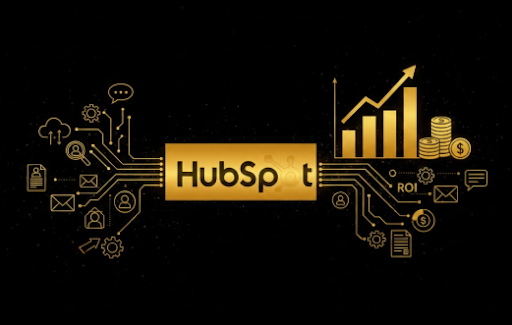
Unlocking the full potential of a Google Ads funnel requires a dynamic journey involving meticulous optimization of both the ad platform/campaigns and the landing page. In this comprehensive guide, our focus will be on the initial part of the funnel—Google Ads campaigns. We'll delve into a strategic approach to optimize performance, ensuring your advertising efforts translate into meaningful results.
The Foundation: Impressions and Bidding
Key Metric: Impressions
Understanding Impressions:
If impressions are low, it indicates that the search volume for your keywords is insufficient. Check the impression share on the Auction insights report for a comprehensive understanding.
Actionable Steps:
Increase bids or start with auto bidding to gauge the approximate bid value.
Engagement Rate: Deciphering Click-Through Rate (CTR)
Key Metric: Click-Through Rate (CTR)
Insight:
A below-average CTR may point to issues in ad copy effectiveness.
Actions:
Examine the relevance of selected keywords—opt for specific, relevant keywords over broad ones. Optimize search queries daily, marking irrelevant ones as negative. Ensure alignment between ad copies and user intent by breaking down ad groups into specific intent keywords.
Fine-Tuning Ad Groups: SKAGs and Messaging Alignment
Strategic Approach:
Create Single Keyword Ad Groups (SKAGs) for laser-focused targeting. Craft ad copies tailored to specific user intent within each SKAG. Consistently refine and iterate on ad copies to maintain relevance.
Beyond Keywords: Ad Copy and Search Query Alignment
Key Focus: Messaging Alignment
Insight:
Misalignment between ad copies and search queries can impact user engagement.
Actions:
Continuously assess and adjust ad copies to align with user intent. Regularly refine and optimize the messaging to enhance relevance.
Optimizing for the Next Phase: Landing Page Journey
Strategic Transition:
Once the initial Google Ads campaign elements are optimized, transition to refining the landing page experience. Ensure a seamless transition from ad messaging to the landing page content.
Conclusion: A Holistic Funnel Optimization Approach
Optimizing the Google Ads funnel is a continuous process that involves a thorough examination of key metrics, strategic bidding adjustments, and a focus on crafting compelling ad copies. By addressing issues at the campaign level, particularly related to impressions and CTR, you lay a solid foundation for the subsequent stages of the user journey.
Share Your Insights
What strategies have you employed to optimize your Google Ads funnel? Share your insights and experiences in the comments below, contributing to the collective knowledge of the digital marketing community.
Let's Optimize Together!
If you're eager to delve deeper into Google Ads funnel optimization or have specific questions, reach out via DM. Let's optimize your campaigns and elevate your digital marketing success!
In the ever-evolving landscape of digital marketing, mastering the intricacies of Google Ads is a strategic imperative. As businesses compete for visibility and user engagement, a well-optimized Google Ads funnel becomes the linchpin of a successful online advertising strategy. In this comprehensive guide, we'll dissect the key components of a Google Ads funnel and unravel a strategic approach to unlock its full potential.
1. The Foundation: Impressions and Bidding
At the core of any successful Google Ads campaign lies the foundation of impressions and bidding. Impressions, representing the number of times your ad is displayed, are a fundamental metric. If your impressions are low, it signals that the search volume for your chosen keywords might be insufficient. To gain a comprehensive understanding, delve into the impression share data available in the Auction insights report. This report unveils the percentage of impressions your ads received compared to the total available.
In terms of actionable steps, consider adjusting your bidding strategy. If impressions are lagging, increasing bids or opting for auto bidding can help gauge the approximate bid value needed to compete effectively.
2. Engagement Rate: Deciphering Click-Through Rate (CTR)
Click-Through Rate (CTR) serves as a critical metric for evaluating the effectiveness of your ad copies. A below-average CTR indicates that your ad might not be resonating with your target audience. To address this, scrutinize the relevance of the selected keywords. Opt for specific, relevant keywords over broad ones to attract a more qualified audience.
Regularly optimize search queries by marking irrelevant ones as negative keywords. This not only enhances the precision of your targeting but also prevents your ads from appearing in unrelated searches. Additionally, consider breaking down ad groups into specific intent keywords to align more closely with user search intent.
3. Fine-Tuning Ad Groups: SKAGs and Messaging Alignment
Single Keyword Ad Groups (SKAGs) are a potent tool for fine-tuning your ad groups and enhancing messaging alignment. By creating SKAGs, you ensure laser-focused targeting. Craft ad copies tailored to the specific user intent within each SKAG, allowing for a more personalized and resonant messaging approach.
Consistently refine and iterate on ad copies to maintain relevance. Regularly review and update your ad copies to align with the evolving dynamics of your industry and user expectations. This proactive approach ensures that your messaging remains fresh and compelling.
4. Beyond Keywords: Ad Copy and Search Query Alignment
While keywords are crucial, ensuring alignment between ad copies and search queries is equally paramount. Misalignment between these elements can negatively impact user engagement. To address this, continuously assess and adjust your ad copies to align with user intent. Regularly refine and optimize your messaging to enhance relevance and resonance with your audience.
By staying attuned to user intent and adjusting your ad copies accordingly, you create a seamless experience for users from the moment they see your ad to when they click through to your landing page.
5. Optimizing for the Next Phase: Landing Page Journey
As you fine-tune your Google Ads campaign elements, it's crucial to transition seamlessly into refining the landing page experience. The landing page is the next critical touchpoint in the user journey, and its optimization is pivotal for converting clicks into meaningful actions.
Ensure a seamless transition from ad messaging to the landing page content. The messaging on your landing page should align closely with the ad copies that users clicked on. Consistency in messaging builds trust and reinforces the relevance of your offering.
Conclusion: A Holistic Funnel Optimization Approach
In conclusion, optimizing the Google Ads funnel is a dynamic and continuous process. By examining key metrics, strategically adjusting bids, and focusing on crafting compelling ad copies, you lay a solid foundation for the subsequent stages of the user journey. The interconnected nature of these elements requires a holistic approach to ensure a seamless and effective user experience from the first impression to the final conversion.
As the digital marketing landscape evolves, staying agile and responsive to changes in user behavior and industry trends is paramount. A well-optimized Google Ads funnel positions your business for success, allowing you to maximize the impact of your advertising budget and drive meaningful results.
Share Your Insights
What strategies have you employed to optimize your Google Ads funnel? Share your insights and experiences in the comments below, contributing to the collective knowledge of the digital marketing community.
Let's Optimize Together!
If you're eager to delve deeper into Google Ads funnel optimization or have specific questions, reach out via DM. Let's optimize your campaigns and elevate your digital marketing success!
In the fast-paced and competitive landscape of online advertising, decoding the Google Ads funnel is a strategic imperative. As businesses vie for attention and conversions, a well-optimized Google Ads funnel becomes the linchpin of a successful digital marketing strategy. This comprehensive guide dissects the key components of a Google Ads funnel, providing actionable insights to elevate your campaign performance and drive meaningful results.
Introduction
Unlocking the full potential of a Google Ads funnel requires a dynamic journey involving meticulous optimization of both the ad platform/campaigns and the landing page. In this comprehensive guide, our focus will be on the initial part of the funnel—Google Ads campaigns. We'll delve into a strategic approach to optimize performance, ensuring your advertising efforts translate into meaningful results.
1. The Foundation: Impressions and Bidding
At the core of any successful Google Ads campaign lies the foundation of impressions and bidding. Impressions, representing the number of times your ad is displayed, are a fundamental metric. If your impressions are low, it signals that the search volume for your chosen keywords might be insufficient. To gain a comprehensive understanding, delve into the impression share data available in the Auction insights report. This report unveils the percentage of impressions your ads received compared to the total available.
In terms of actionable steps, consider adjusting your bidding strategy. If impressions are lagging, increasing bids or opting for auto bidding can help gauge the approximate bid value needed to compete effectively.
2. Engagement Rate: Deciphering Click-Through Rate (CTR)
Click-Through Rate (CTR) serves as a critical metric for evaluating the effectiveness of your ad copies. A below-average CTR indicates that your ad might not be resonating with your target audience. To address this, scrutinize the relevance of the selected keywords. Opt for specific, relevant keywords over broad ones to attract a more qualified audience.
Regularly optimize search queries by marking irrelevant ones as negative keywords. This not only enhances the precision of your targeting but also prevents your ads from appearing in unrelated searches. Additionally, consider breaking down ad groups into specific intent keywords to align more closely with user search intent.
3. Fine-Tuning Ad Groups: SKAGs and Messaging Alignment
Single Keyword Ad Groups (SKAGs) are a potent tool for fine-tuning your ad groups and enhancing messaging alignment. By creating SKAGs, you ensure laser-focused targeting. Craft ad copies tailored to the specific user intent within each SKAG, allowing for a more personalized and resonant messaging approach.
Consistently refine and iterate on ad copies to maintain relevance. Regularly review and update your ad copies to align with the evolving dynamics of your industry and user expectations. This proactive approach ensures that your messaging remains fresh and compelling.
4. Beyond Keywords: Ad Copy and Search Query Alignment
While keywords are crucial, ensuring alignment between ad copies and search queries is equally paramount. Misalignment between these elements can negatively impact user engagement. To address this, continuously assess and adjust your ad copies to align with user intent. Regularly refine and optimize your messaging to enhance relevance and resonance with your audience.
By staying attuned to user intent and adjusting your ad copies accordingly, you create a seamless experience for users from the moment they see your ad to when they click through to your landing page.
5. Optimizing for the Next Phase: Landing Page Journey
As you fine-tune your Google Ads campaign elements, it's crucial to transition seamlessly into refining the landing page experience. The landing page is the next critical touchpoint in the user journey, and its optimization is pivotal for converting clicks into meaningful actions.
Ensure a seamless transition from ad messaging to the landing page content. The messaging on your landing page should align closely with the ad copies that users clicked on. Consistency in messaging builds trust and reinforces the relevance of your offering.
Conclusion: A Holistic Funnel Optimization Approach
In conclusion, optimizing the Google Ads funnel is a dynamic and continuous process. By examining key metrics, strategically adjusting bids, and focusing on crafting compelling ad copies, you lay a solid foundation for the subsequent stages of the user journey. The interconnected nature of these elements requires a holistic approach to ensure a seamless and effective user experience from the first impression to the final conversion.
As the digital marketing landscape evolves, staying agile and responsive to changes in user behavior and industry trends is paramount. A well-optimized Google Ads funnel positions your business for success, allowing you to maximize the impact of your advertising budget and drive meaningful results.
Share Your Insights
What strategies have you employed to optimize your Google Ads funnel? Share your insights and experiences in the comments below, contributing to the collective knowledge of the digital marketing community.
Let's Optimize Together!
If you're eager to delve deeper into Google Ads funnel optimization or have specific questions, reach out via DM. Let's optimize your campaigns and elevate your digital marketing success!
Emphasize your product's unique features or benefits to differentiate it from competitors
In nec dictum adipiscing pharetra enim etiam scelerisque dolor purus ipsum egestas cursus vulputate arcu egestas ut eu sed mollis consectetur mattis pharetra curabitur et maecenas in mattis fames consectetur ipsum quis risus mauris aliquam ornare nisl purus at ipsum nulla accumsan consectetur vestibulum suspendisse aliquam condimentum scelerisque lacinia pellentesque vestibulum condimentum turpis ligula pharetra dictum sapien facilisis sapien at sagittis et cursus congue.
- Pharetra curabitur et maecenas in mattis fames consectetur ipsum quis risus.
- Justo urna nisi auctor consequat consectetur dolor lectus blandit.
- Eget egestas volutpat lacinia vestibulum vitae mattis hendrerit.
- Ornare elit odio tellus orci bibendum dictum id sem congue enim amet diam.
Incorporate statistics or specific numbers to highlight the effectiveness or popularity of your offering
Convallis pellentesque ullamcorper sapien sed tristique fermentum proin amet quam tincidunt feugiat vitae neque quisque odio ut pellentesque ac mauris eget lectus. Pretium arcu turpis lacus sapien sit at eu sapien duis magna nunc nibh nam non ut nibh ultrices ultrices elementum egestas enim nisl sed cursus pellentesque sit dignissim enim euismod sit et convallis sed pelis viverra quam at nisl sit pharetra enim nisl nec vestibulum posuere in volutpat sed blandit neque risus.

Use time-sensitive language to encourage immediate action, such as "Limited Time Offer
Feugiat vitae neque quisque odio ut pellentesque ac mauris eget lectus. Pretium arcu turpis lacus sapien sit at eu sapien duis magna nunc nibh nam non ut nibh ultrices ultrices elementum egestas enim nisl sed cursus pellentesque sit dignissim enim euismod sit et convallis sed pelis viverra quam at nisl sit pharetra enim nisl nec vestibulum posuere in volutpat sed blandit neque risus.
- Pharetra curabitur et maecenas in mattis fames consectetur ipsum quis risus.
- Justo urna nisi auctor consequat consectetur dolor lectus blandit.
- Eget egestas volutpat lacinia vestibulum vitae mattis hendrerit.
- Ornare elit odio tellus orci bibendum dictum id sem congue enim amet diam.
Address customer pain points directly by showing how your product solves their problems
Feugiat vitae neque quisque odio ut pellentesque ac mauris eget lectus. Pretium arcu turpis lacus sapien sit at eu sapien duis magna nunc nibh nam non ut nibh ultrices ultrices elementum egestas enim nisl sed cursus pellentesque sit dignissim enim euismod sit et convallis sed pelis viverra quam at nisl sit pharetra enim nisl nec vestibulum posuere in volutpat sed blandit neque risus.
Vel etiam vel amet aenean eget in habitasse nunc duis tellus sem turpis risus aliquam ac volutpat tellus eu faucibus ullamcorper.
Tailor titles to your ideal customer segment using phrases like "Designed for Busy Professionals
Sed pretium id nibh id sit felis vitae volutpat volutpat adipiscing at sodales neque lectus mi phasellus commodo at elit suspendisse ornare faucibus lectus purus viverra in nec aliquet commodo et sed sed nisi tempor mi pellentesque arcu viverra pretium duis enim vulputate dignissim etiam ultrices vitae neque urna proin nibh diam turpis augue lacus.
Related posts

.webp)



.webp)
.webp)




